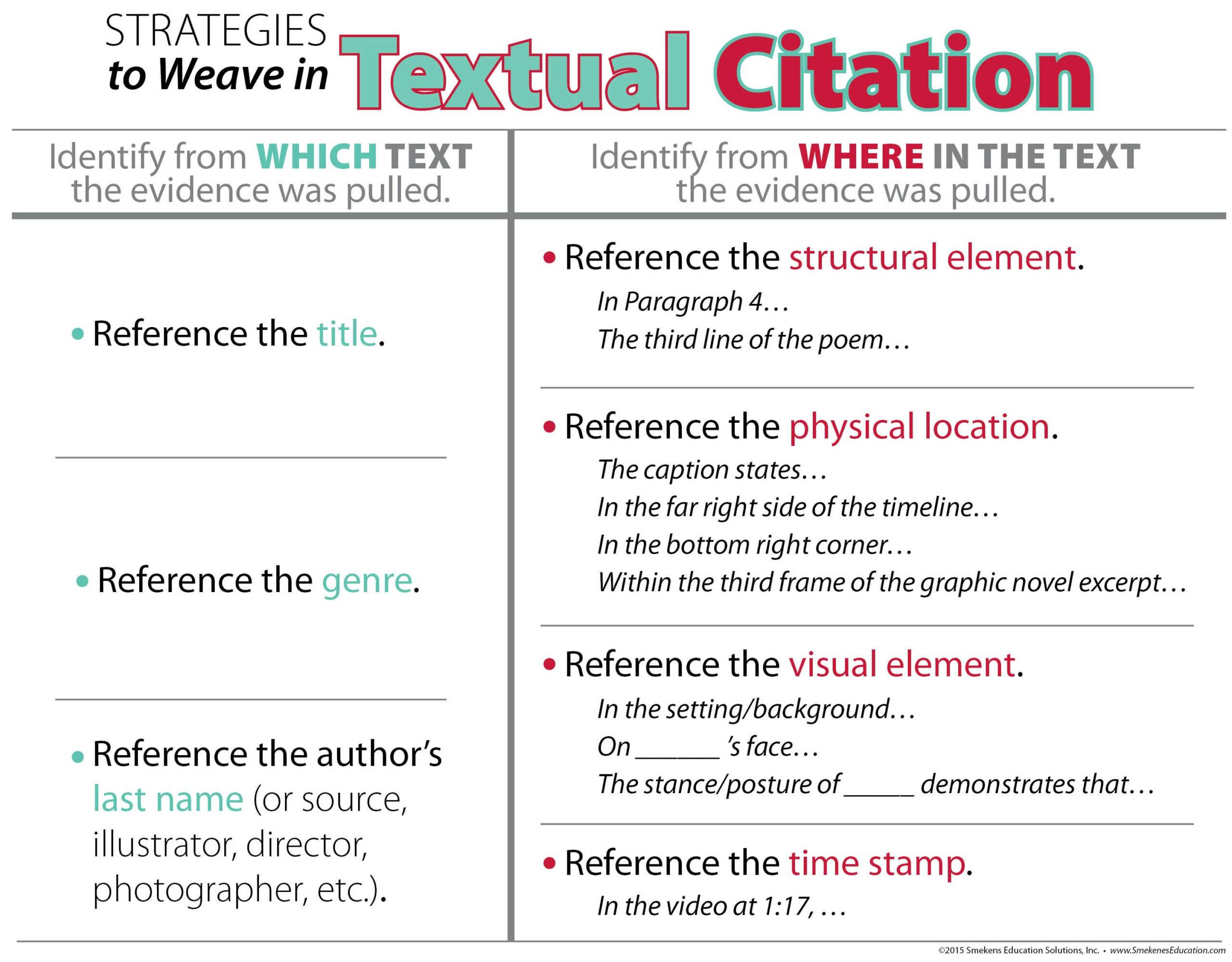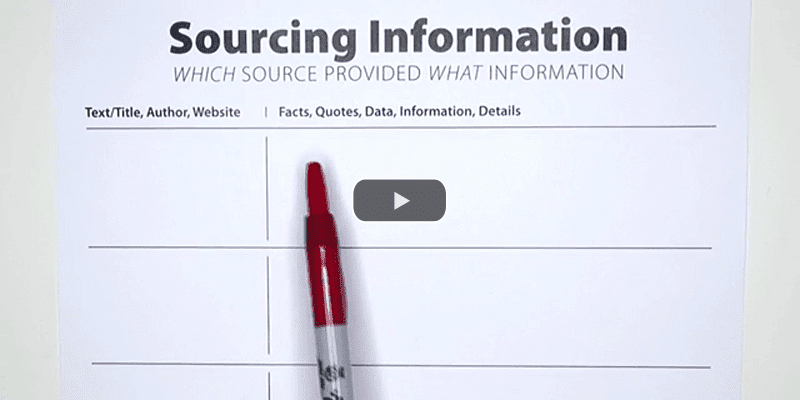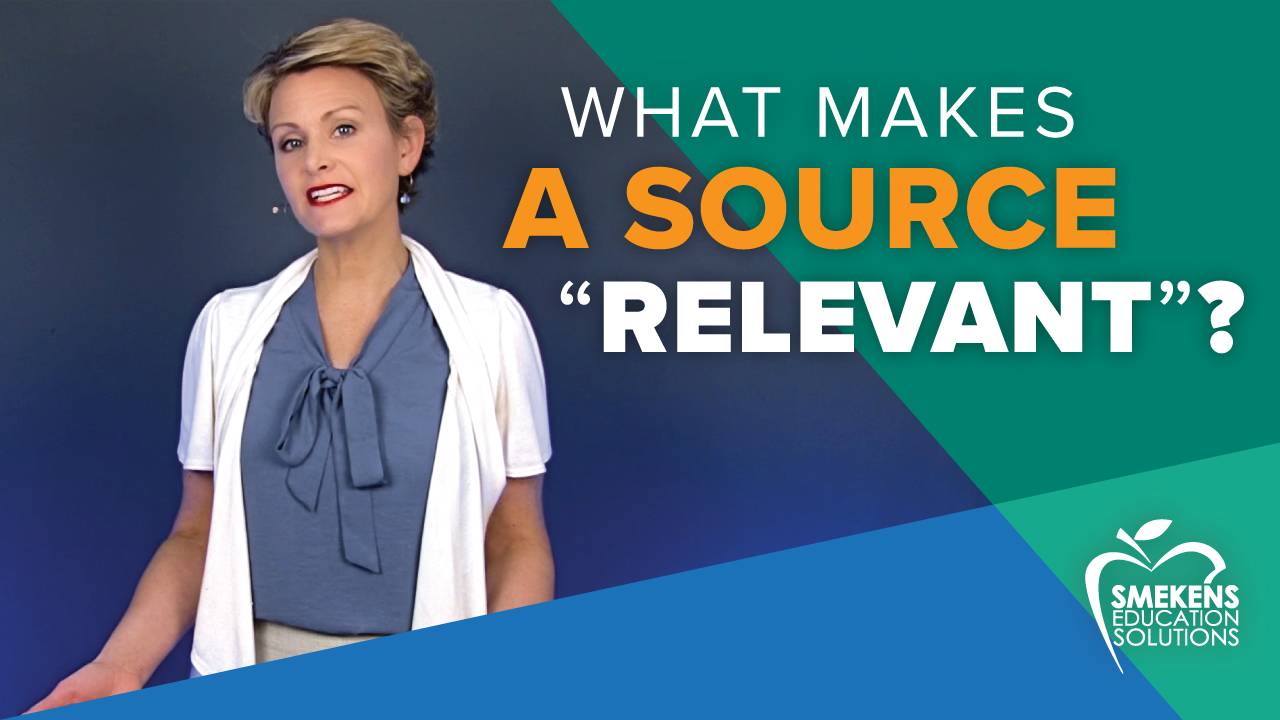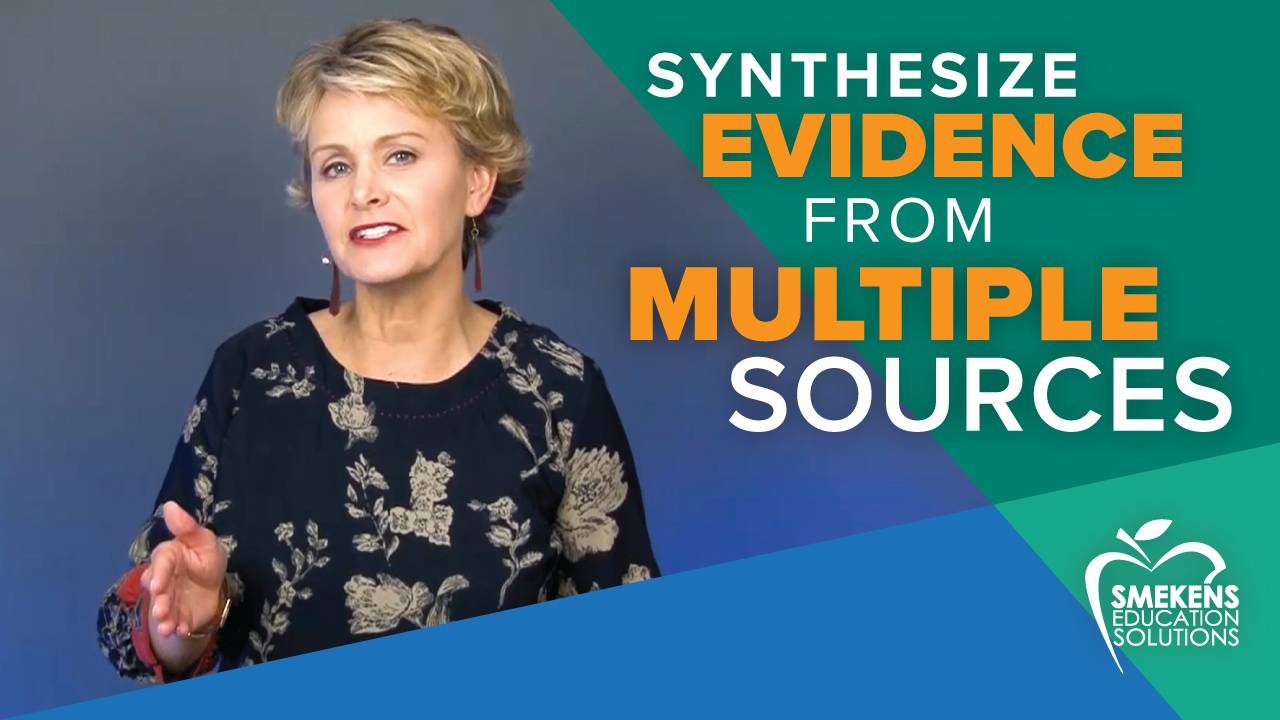reading
Weave the What, Which, & Where into textual citations
Teaching students to cite details to support their inferences is not new. However, be sure your instruction includes more than just what the details are. Students also need to include which text and where in the text the details were found.
WHICH text
Many teachers provide students with sentence starters for weaving textual citation information into written responses. According to the passage– The article states— In the text– The character said– All of these sentence starters would be followed with words pulled directly from the text and often written within quotation marks.
This all works fine when there is only one text in question. But what if the students read 2-3 articles? Students need to tell the reader from which text specific evidence was pulled. Here are three options:
1. Identify the title. Simply reference the title of the article. Whether you’re reading two or three different passages, the titles are all different. (TIP: If the title is long, teach students to shorten it to a key phrase.)
2. Identify the genre. If the texts are different genres, reference them by their type. If one passage is an informational text and the other is a poem, reference the evidence as from the poem or according to the article. If one text is a story and the other is a video, include a phrase like as stated in the story or observed in the video.
3. Identify the author. If the titles are long and the genres are the same, another option would be to identify the sources by naming the authors. If both texts are stories, and one is written by M. Smith and the other by L. Jones, simply reference those authors by last name. As Jones wrote… or In Smith’s story…
NOTE: Keep in mind, we want to make sure students understand that “author” has to be loosely interpreted. If the text was a video, the “author” was possibly the director. If the text is an infographic (e.g., chart, map, timeline, etc.), then the “author” is the source of the information. If the text is an illustration or a cartoon, then students need to look for the name of the illustrator or cartoonist.
WHERE in the text
The next step is to cite where in the text the details were found.
1. Reference the structural element. Typically students can simply identify the paragraph number or line number. For example, According to the article in paragraph four– or The third line of the poem states—.
However, this won’t work if the text is a chart, a timeline, a photo, a graphic novel excerpt, or a video. Students need other strategies for indicating where in these nontraditional texts the evidence was found.
2. Reference the physical location. In a visual text, reveal the physical location where the evidence exists. For instance, The caption states– or On the far right end of the timeline– or In the bottom right corner of the photo–. This kind of placement identification also applies to illustrations or political cartoons, too. For a graphic novel, reference the frame number: Within the third frame of the graphic novel excerpt–.
3. Reference the visual element. Another option is to identify a particular component or story element. Explain that the detail is evident in the setting or background, in the facial expression, body posture, or physical stance. All of these are options when the visual text is a photo, cartoon, or illustration.
4. Reference the time stamp. When citing evidence from a video, the previous strategy would work. However, videos offer a more precise option; they include time stamps. Have students simply note when the evidence appears in the video. At 1:47 in the video–.
Teach students to select strong and appropriate evidence. But beyond that, make sure to teach them to cite which text and where in the text they pulled details. They should weave this information into their written responses, as well.





